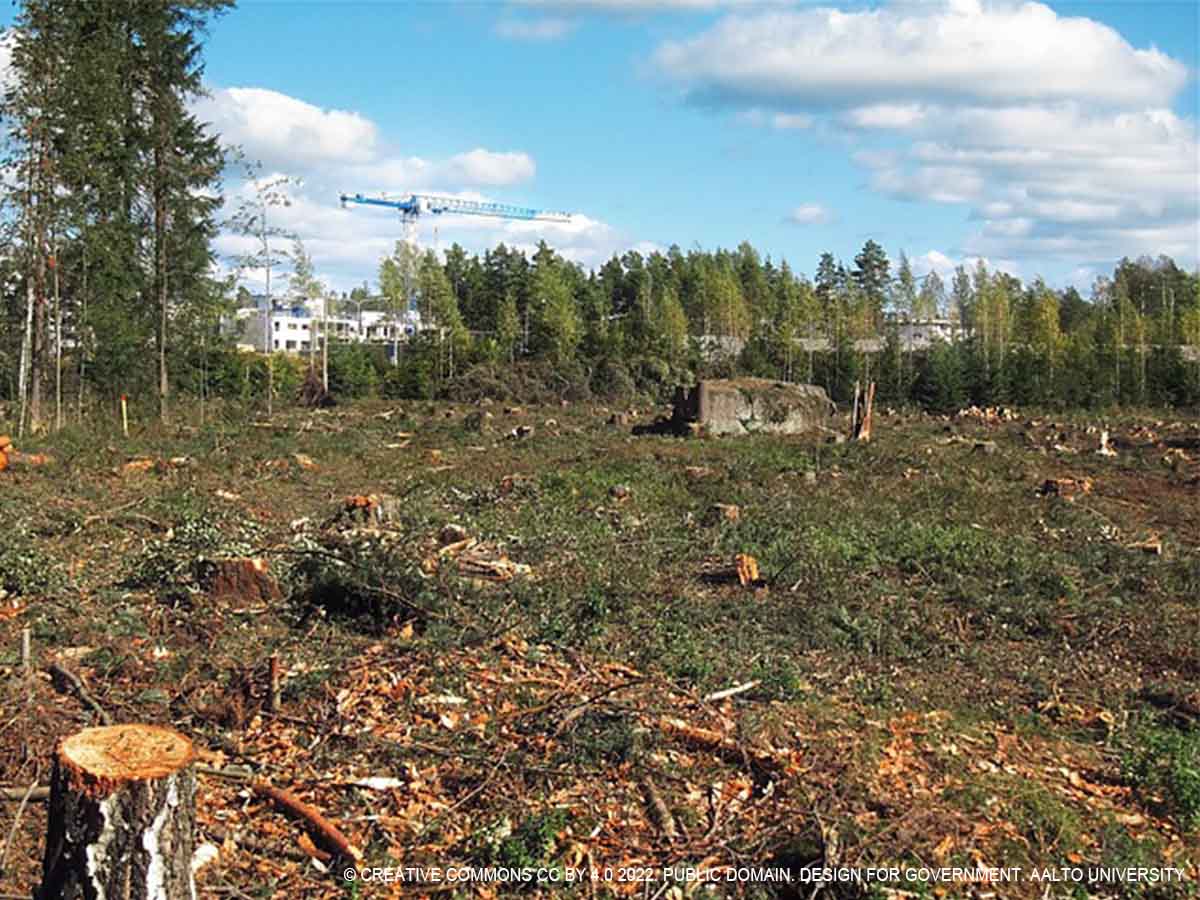This blog post reports on work-in-progress within the DfG course! The post is written by group 1B dealing with Metsähallitus and the Ministry of the Environment’s brief on ‘The future of sustainable nature recreation’. The group includes Sofia Wasastjerna from the International Design Business Management program, and Mantė Žygelytė, Ninni Laaksonen and Xinyu Zhang from the Collaborative and Industrial Design program.
Written by: Xinyu Zhang
Nature and we are one
Nature is the treasure of Finland. There are 41 national parks (Metsähallitus, n.d.) and 12.6 million hectares of state-owned areas, and over 75 percent of the land is covered with forests (Ministry of Agriculture and Forestry of Finland, n.d.). Finns attach nature great importance to the wellbeing of each adult and growing child. And for them, nature is not only the place within which they physically live but more importantly the identity to which they emotionally connect.
The pressure of modern life and the difficulty during the worldwide pandemic prompted a closer relationship between nature and people. However, the relationship between nature and ‘us’ is not equal. As people derive physical and mental benefits from the beautiful environment, their unintentional interactions could cause threats to nature and biodiversity. Besides, as Everyman’s Rights grants all people in Finland the optimal freedom in nature (Ministry of the Environment of Finland, n.d.), we should also take responsibility for it; in other words, there is no ‘us’ humans alongside ‘it’ nature—altogether we are one.
Understanding the deep meaning of sustainable
Metsähallitus and the Ministry of Environment encourage people to enter and stay longer in nature (e.g., the Healthy Park, Healthy People program (Metsähallitus, 2021), and expect a healthier human-nature relationship that promises a sustainable future. While ‘sustainable’ being a clear and simple outcome, it covers multiple meanings—reducing footprint to and in natural areas, preserving biodiversity, promoting environmental-beneficial tourism, etc., and the process getting there is complex and long—it requires collaboration with multiple stakeholders, including travel companies, NGOs, private forest owners.
In addition to sustainability of nature, our group distinguished other possible directions for the project. For example, we wondered whether we could bring financial growth alongside ecological sustainability like creating more jobs, or maybe we could even attach ‘nature’ as an international image/identity to Finland and design sustainable travel routes to attract more visitors.
A road, but with mist…
We had a roundtable discussion with six commissioners from Metsähallitus, National Parks, Ministry of Environment and Ministry of Agriculture and Forestry on Monday, March 8th. In the discussion, we asked both general questions which were answered by all and detailed questions for specific organizations, and we aimed to understand the relationship among commissioners, and their different motivations and challenges. Their goals were clearly stated in the discussion: first, as said by Jaakko Nippala (one of the roundtable discussion guests from the Ministry of Agriculture and Forestry), “we want people to have a closer connection to nature…” while also protecting it; second, sharing the high-visitor pressure of reserve places to other natural areas. However, goals are still broad and could be interpreted into many ways, and questions like how each user profile damages nature differently and how Metsähallitus collaborates with other stakeholders and translates sustainability goals into action were not answered.
Un-fogging the road to sustainable nature recreation
After the roundtable discussion, we shared insights among ourselves and in supergroup. Our group was particularly curious about the user experience and behaviour in nature, therefore, we narrowed two research questions: how might we enhance the experience of visiting national parks through education, health, and tourism sectors, and how might we increase sustainable behaviour in recreational parks or other forest areas?
In weeks 3 and 4, we will conduct interviews with stakeholders including ministries, national and regional government organizations, private companies and park visitors. Through interviews, we hope to map out their different motivations of them for sustainable nature recreation, and we aim to acquire a comprehensive view of the subject with aspects of human, nature and their relationship. Our first interview was with the service designer and the specialist designer from Metsähallitus on Tuesday, March 15th, 2022. In the interview, we asked questions about current user-profiles and the specific damages each group does in national parks; through it, we aimed to analyze to whom Metsähallitus targeted now and to further identify which latent/peripheral user group could be considered in long-term goal.
While doing interviews for the rest of this week, we are investigating examples of national parks and recreation areas in other countries and regions to get inspiration for our project. From the end of week 3, we will start organizing elements (e.g., factors, connections, feedback) from interview and desktop research to draw a thorough systematic view of the project, and to prepare for later steps. The best is yet to come, please keep on board!
The DfG course runs for 14 weeks each spring – the 2022 course has now started and runs from 28 Feb to 23 May. It’s an advanced studio course in which students work in multidisciplinary teams to address project briefs commissioned by governmental ministries in Finland. The course proceeds through the spring as a series of teaching modules in which various research and design methods are applied to address the project briefs. Blog posts are written by student groups, in which they share news, experiences and insights from within the course activities and their project development. More information here about the DfG 2022 project briefs. Hold the date for the public online finale online 09:00-12:00 AM (EEST) on Monday 23 May!

